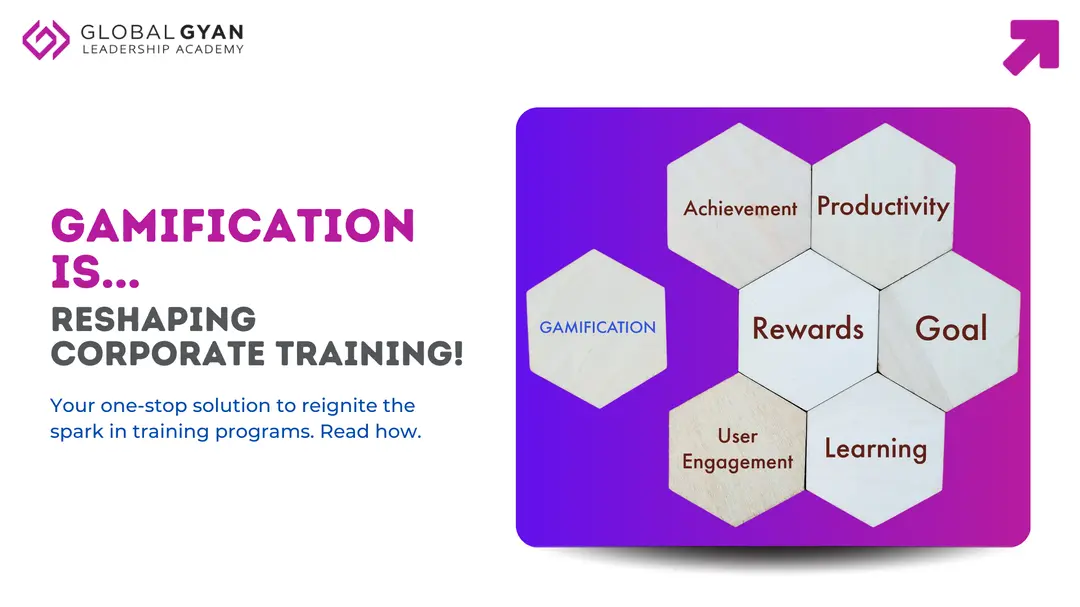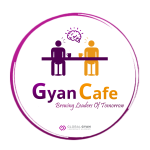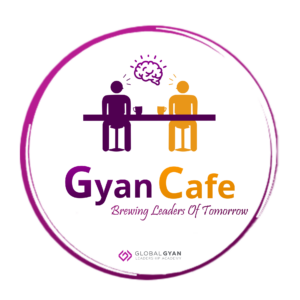How Gamification is Reshaping Corporate Training


Corporate training has evolved over the years, from classroom sessions to e-learning and now to gamification. Today, gamification for corporate training has gained traction as a novel way to enhance learning experiences and drive engagement.
And it has worked well in the professional setting, as is evidenced by the growing demand for it. But we’re getting ahead of ourselves. Let’s start with defining what gamification in learning and development is, examples of the use of gamification in corporate training, how it impacts ROI (i.e., answering the question, ‘does gamified learning get results?’), and the benefits that come with it.
What is Gamification in Learning and Development?
At its core, gamification in learning and development, where corporate training programs are concerned, means adding game-like elements into learning. It can be as simple as a leaderboard or as complex as an entire game-based training module with quizzes & assessments and more!
Resource Corner: Our board game simulations turn tedious corporate training programs
into competitive carnivals!
You may be wondering, what is the aim of gamification in training and development? Well, it is to make learning engaging and interactive. You see, gamification in corporate training encourages employees to actively participate and retain more information.
Today, learning interventions integrate several gamification techniques, like points, levels, badges, and rewards, to boost motivation and commitment. Simply put, L&D professionals cannot get enough of gamification in learning and development!
Key Elements of Gamification in Corporate Training
Incorporating gamification in training and development can make the learning process interactive and motivating. Here are some essential elements that can enhance corporate training:
- Points and Scoring: Assigning points for completing tasks, answering quiz questions, or achieving milestones instils a sense of accomplishment and motivates learners to keep progressing. For example, in our courses, employees who complete a digital learning module are awarded points.
- Badges and Certifications: Visual symbols like badges or certificates are awarded for reaching certain levels or completing specific modules, boosting morale and providing a tangible reminder of progress.
- Leaderboards: Ranking participants on leaderboards fosters healthy competition, letting employees see how they compare with peers, which can be both motivating and foster a sense of camaraderie.
- Quests and Challenges: Breaking down training into smaller tasks or missions makes learning feel manageable and game-like, encouraging learners to “complete the quest” rather than simply finish a lesson.
- Progress Bars and Levels: Visual progress indicators like bars and levels offer a clear sense of advancement, which can drive motivation to keep moving toward completion. For example, in our courses, a participant’s progress is tracked for the completion of modules.
Examples of Gamification in Corporate Training
Many organizations in India and globally have integrated gamification into their training programs, especially for soft skills, compliance, and technical training. Here are a few common examples:
- Leadership & Management Programs: Leadership skills require practical, on-the-job application. As a strategic L&D partner for leading Indian corporates, GlobalGyan has extensively incorporated gamification into learning journeys to simulate real-life challenges through role-plays, allowing managers to test their decision-making skills and earn incentives for effective choices.
- Sales Training: Sales teams are often motivated by targets. By adding gamification elements like points for completing training modules and badges for hitting specific milestones, sales employees can feel more engaged and rewarded as they build essential skills.
- Compliance Training: Compliance courses can sometimes feel tedious. Using gamification in compliance training, such as quizzes with immediate feedback, can keep employees interested, resulting in better retention of essential policies and regulations.
- Onboarding: Gamified onboarding processes help new hires learn about company culture, policies, and processes in an interactive way. By earning rewards and completing “levels,” new employees can get excited about their role and quickly adapt to their new environment.
Benefits of Gamification in Corporate Training
Gamification in learning and development has become a powerful tool for L&D professionals, especially in a competitive market. From increasing employee engagement to promoting collaboration, gamification for corporate training can transform the learning experience for employees. Here are a few reasons why gamification is the right strategy for your organization’s training needs:
- Increases Engagement: Gamification for corporate training transforms learning into an interactive experience, encouraging employees to participate actively. Elements like rewards and challenges keep learners motivated, making training sessions more engaging than traditional methods.
- Enhances Motivation: By incorporating rewards, levels, and leaderboards, gamification in training and development fosters a sense of achievement. This structured recognition of progress inspires employees to stay committed, helping them strive for excellence throughout the training program.
- Boosts Knowledge Retention: Gamified training methods make complex topics easier to understand and retain. Through hands-on activities, employees can better recall critical information, making gamification in corporate learning a powerful tool for long-term knowledge retention.
- Promotes Collaboration: Gamification often includes team-based tasks, which strengthen bonds between colleagues. This approach to corporate training supports teamwork and communication, essential for building a cohesive, collaborative work environment in organizations of any size.
- Builds Real-Life Skills: Simulation-based gamification enables employees to practice skills relevant to their roles, making training more practical. Such realistic scenarios in training and development prepare learners to tackle real-world challenges with confidence and competence.
Does Gamification Impact ROI?
When it comes to corporate training, return on investment (ROI) is a primary concern. ‘Does gamified training get results’ is a question L&D teams are always on the lookout for. As a result, organizations are increasingly analyzing the impact of gamification for corporate training programs.
Here’s how gamification in learning and development contributes to ROI:
- Improved Engagement Leads to Higher Participation Rates: Gamification for corporate training boosts engagement, leading to higher participation and fewer dropouts. With more employees completing gamified training programs, the company maximizes the reach of its training investment, increasing ROI on learning resources and materials.
- Better Knowledge Retention Enhances Skill Application: Gamification in training and development uses interactive elements like quizzes and challenges to boost knowledge retention, making skills easier to apply on the job. Employees who remember and use what they’ve learned contribute to better productivity and fewer costly mistakes.
- Accelerates Time-to-Competency: Gamified training accelerates time-to-competency by making learning efficient and streamlined. Employees reach proficiency faster, reducing onboarding costs and allowing them to contribute to business goals sooner—an impactful way to enhance ROI on training programs.
- Increases Motivation and Reduces Turnover: Gamification in corporate training enhances motivation by adding rewards and recognition, making learning enjoyable. Motivated employees are more likely to stay, reducing turnover costs, preserving institutional knowledge, and boosting company productivity for a long-term ROI gain.
- Quantifiable Metrics and Data for Improvement: Gamified training platforms provide valuable metrics—completion rates, scores, and time spent—that reveal employee performance and program effectiveness. These insights allow companies to fine-tune training for relevance, further increasing the ROI of gamified corporate learning.
Making the Right Choice: Is Gamification Right for Your Organization?
As gamification becomes increasingly popular, many L&D professionals wonder if it’s the right strategy for their organization’s training needs. While gamification in training and development offers a wide range of benefits—from engagement to knowledge retention—success depends on aligning gamification elements with organizational goals and employee needs. Here are a few factors to consider when determining if gamification for corporate training is the best fit for your company:
- Define Clear Goals: Before implementing gamification, identify specific objectives. Ask yourself, ‘What is the primary goal of this training program?’ Are you aiming to improve knowledge retention, encourage skill application, foster teamwork, or increase completion rates? Clear goals ensure that gamification aligns with your business needs, making it a strategic tool rather than a trend.
- Start Small: If gamification is new to your organization, begin with a small-scale pilot program. Testing gamification for corporate training in a controlled setting allows you to gather feedback, measure success, and refine the approach before scaling.
- Get Feedback: Employee feedback on gamified training can offer valuable insights. By regularly gathering feedback, L&D teams can adjust gamification elements to maintain interest and effectiveness, ensuring that training objectives are consistently met.
- Balance Fun with Learning: While gamification adds an element of fun, ensure the primary focus remains on learning outcomes. Overemphasis on rewards can dilute training quality. The goal is to engage employees meaningfully, fostering both skill development and enjoyment.
Resource Corner: Check out our portfolio of self-paced learning with gamified simulations.
Wrapping Up
Gamification in learning and development has proven its potential to engage employees, enhance knowledge retention, and improve overall training outcomes. However, its success lies in implementing it in a thoughtful manner, with clear objectives and careful evaluation. Vendors like GlobalGyan help you in every step of the way. We firmly believe that, when done right, gamification can transform the learning experience for working professionals, instilling a culture of continuous improvement and proactive learning in organizations.
For L&D professionals, exploring gamification in training and development can open up a world of possibilities. Whether it’s improving sales performance, boosting compliance, or enhancing leadership skills, gamification could be the next step in elevating your corporate training strategy.
Looking to add an element of gamification in your learning interventions? Get in touch with our representative Kajal Motwani (kajal@globalgyan.in) for a personal consult today!
FAQs:
1. What is an example of gamification in training?
- Leadership training uses gamified role-play and decision-making scenarios, allowing managers to practice skills and earn points for effective choices.
2. How does gamification help in learning techniques?
- Gamification enhances learning by making sessions interactive, helping employees retain information through engaging activities, simulations, and immediate feedback.
3. What are the various benefits of gamification in the training program?
- Gamification boosts engagement, improves knowledge retention, encourages collaboration, provides measurable progress, and builds real-life skills for employees.
4. How does gamification affect business?
- It enhances ROI by increasing employee engagement, boosting performance, and reducing training costs, contributing to overall organizational growth.






Responses